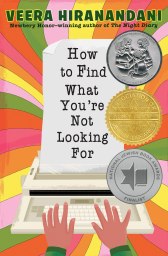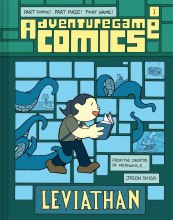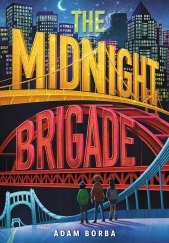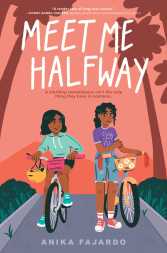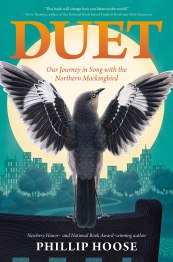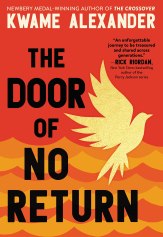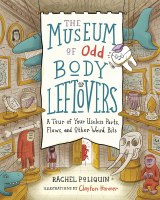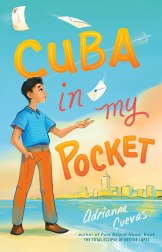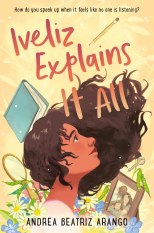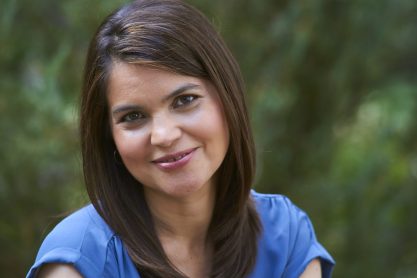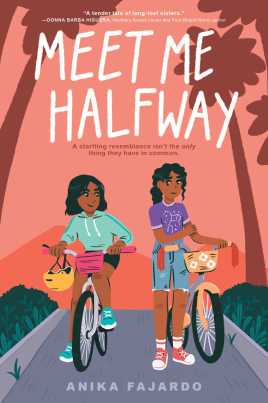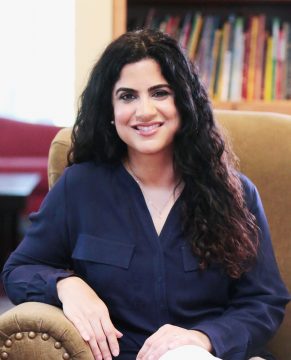 Three years before the pandemic hit, I had the great luck of sharing a train ride with Hena Khan, the award-winning author of Amina’s Voice. Hena and I were headed home from #nErDCampLI, and I remember feeling wiped out—and talked out—from the conference. But once I sat down next to Hena and started chatting, my weariness evaporated and an instant connection was formed. For the next 60 minutes, we talked about writing (we were both debut authors); parenting (Hena’s two sons were in middle school; my daughter was a senior in high school); and countless other topics that newfound friends on a train often discover.
Three years before the pandemic hit, I had the great luck of sharing a train ride with Hena Khan, the award-winning author of Amina’s Voice. Hena and I were headed home from #nErDCampLI, and I remember feeling wiped out—and talked out—from the conference. But once I sat down next to Hena and started chatting, my weariness evaporated and an instant connection was formed. For the next 60 minutes, we talked about writing (we were both debut authors); parenting (Hena’s two sons were in middle school; my daughter was a senior in high school); and countless other topics that newfound friends on a train often discover.
Since Amina’s Voice came out in 2017, Hena has gone on to publish multiple MG novels, including Amina’s Song (2021), More to the Story (2020), and the Zayd Saleem: Chasing the Dream series. She is also the author of seven picture books and has contributed to six children’s anthologies, including Once Upon an Eid: Stories of Hope and Joy by 15 Muslim Voices. A popular guest speaker in classrooms, school auditoriums, and libraries across the country, Hena’s latest MG novel, Zara’s Rules for Finding Hidden Treasure, is out now from Salaam Reads, an imprint of Simon & Schuster. Here’s a brief summary:
Zara’s Rules for Finding Hidden Treasure
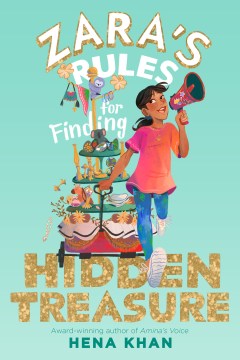
Zara lives for bike rides with her friends—so, when her shiny, brand-new bike goes missing from the park one day, she’s crushed. After her parents insist she earn the money for another bike herself, Zara’s determined to start a business. But what kind? A lemonade stand? Not profitable enough. Selling painted rocks? Not enough customers.
Zara’s starting to get discouraged when she and her friend Naomi finally come up with the perfect idea: The Treasure Wagon, a roving garage sale that unloads knickknacks from the Saleem family basement and makes money all at once! But when a mix-up gets Zara in hot water again, will she have to give up everything she’s earned toward her new bike?
The Interview
MR: Welcome to the Mixed-Up Files, Hena! I’m so happy to have you here. I can’t believe it’s been five years since our paths crossed!
HK: I know! But it’s so nice to reminisce about that lovely train ride and our instant friendship! Thanks so much for inviting me to talk about my newest book.
MR: Zara’s Rules for Finding Hidden Treasure is the second of a trilogy. (Zara’s Rules for Record-Breaking Fun came out earlier this year; Zara’s Rules for Living Your Best Life pubs on March 21, 2023.) What was the inspiration behind the series?
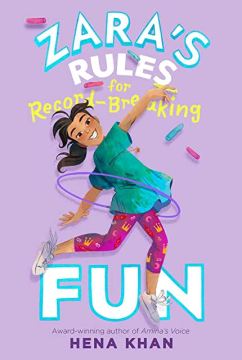
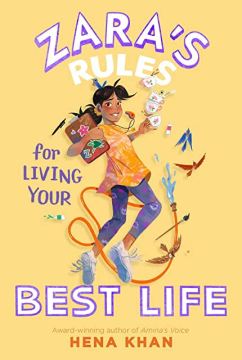
HK: I came up with the idea during the pandemic while listening to children playing outside in droves and thinking about my own childhood. I adored Beverly Cleary’s books, characters like Ramona Quimby and Henry Huggins, and reading about their clever antics (anyone else want to stomp around on coffee can stilts too?). I wanted to write a series that similarly makes kids wish they were part of the neighborhood and imagine themselves joining in the fun, just like I did.
MR: Zara has two loving parents, a cute-but-sometimes-annoying little brother, Zayd, a strong bond with her extended family, including her grandparents and her uncle, Jamal Mamoo, and a crew of caring, fun-loving neighborhood friends. Is this reflective of your own childhood? What are the main similarities and differences?
HK: The crew of neighborhood friends is very much based on the children I grew up with, and the Goldsteins are inspired by my lifelong friends who lived across the street. The extended family, however, is more reflective of my children’s experience and vantage point as third-generation Pakistani American Muslims. I’m fascinated by the way my kids interact with their grandparents (Naano and Nana Abu are essentially my real-life parents), aunts and uncles, and the way they relate to the culture. They find it alternately cool and hilarious and don’t have the same type of pressure, expectations, or awkwardness that I felt as a child of immigrants. I also didn’t get to grow up around many relatives, and always wished I had been as fortunate.
Trash and Treasure
MR: One of the main themes of Zara’s Rules for Finding Hidden Treasure is our emotional attachment to possessions. This resonated with me deeply, because I recently had to clear out my mom’s apartment, which contained 60 years’ worth of stuff. (The task was daunting, to say the least.) What made you focus on this theme? And where does Marie Kondo fit into the picture?
HK: Oh wow, my heart is with you—I’m sure that was incredibly difficult! I grew up with parents who saved everything, and we had a storage room much like the one I describe in the book. They were reluctant to part with anything, in the hopes that it could be useful in the future. I wanted to tackle the topic because it’s something I still wrestle with, both in terms of finding the right balance between saving, donating, and recycling my own things, and convincing my mother to part with her “junk.”
I thought a lot about the idea of trash versus treasure, why we value the things we do, sentimental value, and what really matters. And it felt both cathartic and wishful to write some of the scenes. I’ve heard a lot about Marie Kondo, particularly the controversy around getting rid of books (the horror!), and thought it would be funny to include her although I’m not a disciple . . . at least not yet!
Viewing Life from a Younger Lens
MR: Compared to some of your previous MG novels (Amina’s Voice, Amina’s Song, and More to the Story), the Zara’s Rules trilogy skews younger, ages seven-10, with shorter chapters and numerous illustrations. What’s the main challenge when writing for a younger audience? What’s the most fun?
HK: I’d say the biggest challenge is having less space to fully flesh out characters and plots, which is very important to me even in a shorter book. But it’s so fun to be able to jump right into the action, and to examine the world through the lens of a 10-and-three-quarter-year-old. Kids at that age are very aware and engaged with the world but still so earnest and innocent, and I love to explore the things that I’m thinking about now from that perspective.
Series Versus Stand-alones
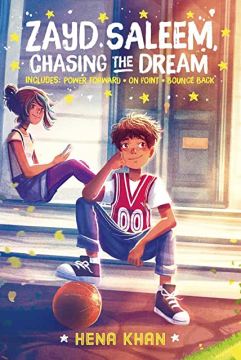
MR: In addition to the Zara’s Rules trilogy, you’ve written the Zayd Saleem: Chasing the Dream series, with six books in total. What’s it like to work on a series as opposed to a stand-alone book?
HK: The biggest difference is that you get to know your characters deeply, so it feels like getting to play with old friends in each story. I never really believed authors who talked about their characters deciding what happens in a story, but I kind of understand that concept now. When characters become so fully developed in your mind, you have an idea of what they would say or do in a situation, and it becomes easier to write them. At the same time, it’s critical to keep the stories fresh and interesting and avoid repetition. I love making passing references to former books as little surprises to those who have read them all.
Picture-Book Love
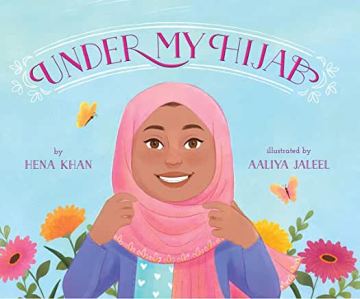
MR: You also write picture books, including the acclaimed Under My Hijab. Is it tricky to switch from MG to picture books—and from picture books to MG…?
HK: It’s not too hard to switch back and forth between the formats since they use very different writing muscles. I generally don’t work on two middle-grade projects at once, but often turn to a picture book during breaks. I love the economy of words and the way one sentence can make or break an entire book. It forces you to be a sharp editor and pay attention to every syllable.
Celebrating Diversity
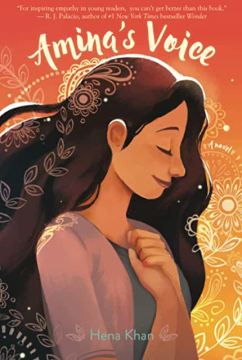
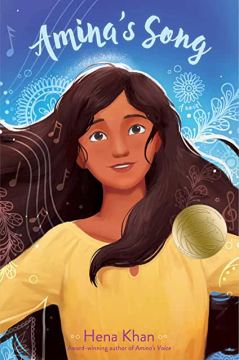
MR: Your books are lovingly infused with elements from your Pakistani heritage, and your characters are ethnically, culturally, and religiously diverse. What can authors—and publishers—do to increase the visibility of authentic, diverse characters in kidlit?
HK: Thank you! The people I love inspire so much of what I write. But it’s important to remember that I represent only one subset of the Pakistani American Muslim community, which also has diversity within it—in terms of level of cultural assimilation, socioeconomic status, religious observance and more. And then, of course, the American Muslim community is even more diverse. I think it’s wonderful to see more diverse representation in kidlit, but we need a bigger variety of stories and characters in all genres. Also, while it’s wonderful to have books to celebration diversity, culture, and traditions, I hope to see more stories where identities aren’t necessarily emphasized but are simply woven into the background like in Zara’s Rules.
Plotter or Pantser?

MR: What does your writing routine look like? Do you have a particular schedule? Also, are you a plotter or a pantser?
HK: I wish I had a routine, but I don’t. I write at all times of the day, sometimes every day for a while and then not for weeks. But I’d like to find some discipline someday! Overall, I’m more of a plotter than a pantser.
The Secret to Success
MR: You’ve written 13 (and counting!) middle-grade novels, seven picture books, and stories included in six anthologies. What’s the secret to being such a prolific author?
HK: Well, I’ve been at it for a while now, and sometimes it feels like I’ve published a lot, and at other times I think I could have done more! I think the key to staying engaged and motivated is to keep challenging myself to improve my craft, to try to reach audiences in different ways, and to only write about what genuinely excites me.
What’s Next?
MR: What are you working on now, Hena? Enquiring Mixed-Up Files readers want to know…
HK: I’m excited to be starting on my second graphic novel, finishing up a new middle-grade novel, and editing an anthology that hasn’t been announced yet. I’ve also got some new picture books on the way! Please connect with me to get updates on my new titles.
Lightning Round!

MR: And finally, no MUF interview is complete without a lightning round, so…
Preferred writing snack?
I prefer cookies but settle for nuts or kettle corn.
Coffee or tea?
Coffee all the way! I drink espresso with a little bit of milk.


Marie Kondo: Yea or nay?
Nay, can’t do it!
Zombie apocalypse: Yea or nay?
If I had to choose an apocalypse, it would be the one.
Superpower?
I’d have to go with invisibility.
Favorite place on earth (besides Seville, Istanbul, and Seattle)?
Turks and Caicos is just incredible.

If you were stranded on a desert island with only three things, what would they be?
My husband and two sons. Or if they count as one family, then ice cream and my laptop.
MR: Thank you for chatting with us, Hena—and congratulations on the recent publication of Zara’s Rules for Finding Hidden Treasure!
Thank YOU!
Bio
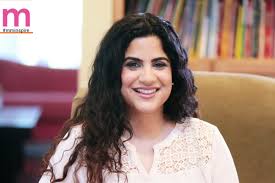
Hena Khan is an award-winning author of picture books and middle-grade fiction. Her middle-grade novel Amina’s Voice launched Simon & Schuster’s groundbreaking Salaam Reads imprint and was named a Best Book of 2017 by the Washington Post, NPR, Kirkus Reviews, and others. The sequel, Amina’s Song, won the 2021 Asian/Pacific Award for Children’s Literature. Hena wrote the popular Zayd Saleem Chasing the Dream series, and More to the Story, a novel inspired by her all-time favorite book, Little Women. Hena’s acclaimed picture books include Golden Domes and Silver Lanterns, Under My Hijab, Crescent Moons and Pointed Minarets, Night of the Moon, and It’s Ramadan, Curious George. Learn more about Hena on her website and follow her on Twitter, Instagram, and Facebook.
(For more on Hena Khan, check out this MUF interview by Jonathan Rosen!)

